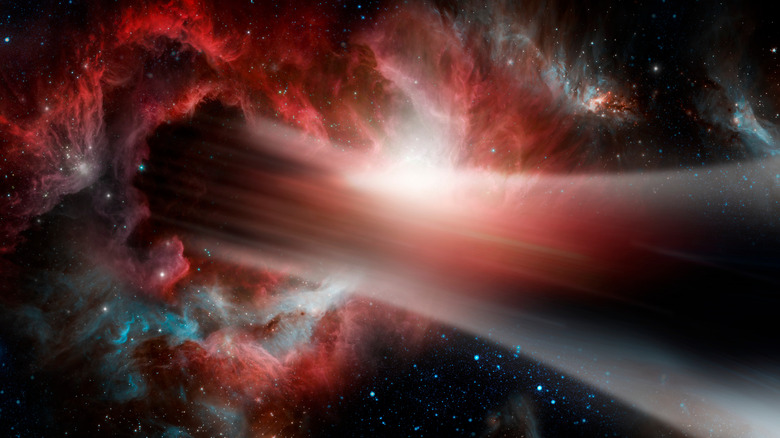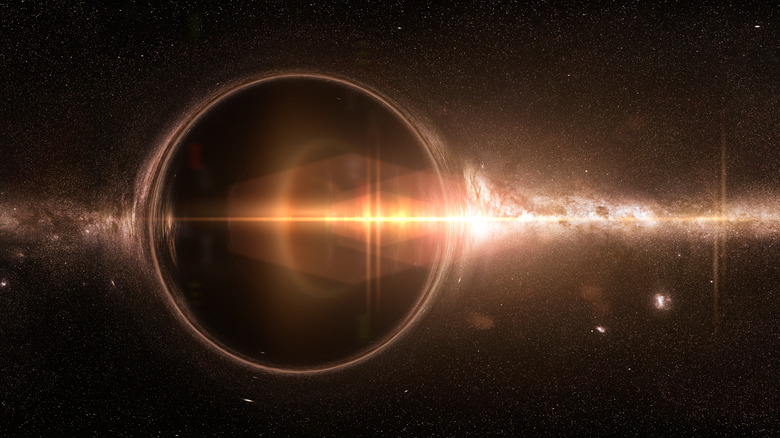Scientists May Have Figured Out How To Find Wormholes (If They Exist)
Featured prominently in books like "The Forever War," games like "Portal," and films like "Interstellar," wormholes have got to be the most popular natural phenomenon in sci-fi, and we don't even know yet if they truly do exist in nature. That, however, could be about to change. In a paper published in the scientific journal "Physical Review D," scientists from China came up with a clever framework for detecting wormholes that may be hiding in deep space.
As a refresher, a wormhole is a theoretical shortcut between two distant points in spacetime, making them adjacent. If one were to imagine a wormhole connecting, say, Los Angeles and New York, it wouldn't be a tunnel in the Earth. From a traveler's standpoint, wormholes would work more like a teleportation device, allowing someone to step off the Santa Monica Pier and find themselves in the middle of Times Square. Of course, there are some oversimplifications here, but it gets the point across.
Because wormholes still remain purely theoretical objects, the paper's authors had to make some assumptions and simplifications of their own. They built a mathematical model for how a wormhole might be expected to behave, and then they ran the numbers on how existing celestial objects like stars, galaxies, and black holes might then interact with a wormhole. What they found was that existing techniques for making astronomical observations could be used to hunt for wormholes. But be warned, things are about to get even more warped.
The mind-bending world of light bending
Anything with mass warps and bends the space around it (technically spacetime, but let's explore that particular wormhole-rabbit-hole another time). The more massive the object, the greater the warping effect. Now imagine a photon — a single packet of light — traveling through the universe. The thing about photons is they're obsessively efficient (or lazy, take your pick). They only travel from point A to point B. They don't care if there's a diner on the way with excellent pie and clean restrooms; photons travel along the shortest route, no exceptions.
In astronomy and other related fields, this is extremely useful. Some objects out in space, like a galaxy, are very massive indeed and cause incredible warping of the space around them. This means that when distant objects on the other side of the galaxy emit beams of light, the photons in those beams use the warped space as a shortcut. Not only do covered up objects become visible, but the effect can make distant objects look bigger. This is called gravitational lensing.
Now, using the mathematical models they built, scientists have determined that wormholes may also cause gravitational lensing, magnifying the objects behind them up to 100,000 times. Better still, these early results suggest that lensing from wormholes could be distinguishable from lensing from other objects like black holes. Of course, their model assumes that wormholes have an electric charge and a negative mass — different and weirder than antimatter — and those are some big assumptions. Still, though, the James Webb Space Telescope has already photographed gravitational lensing, so this theory's just one lucky snapshot away from being proven true.

